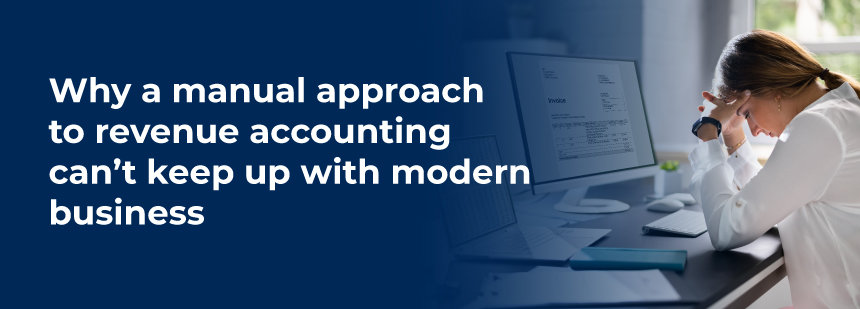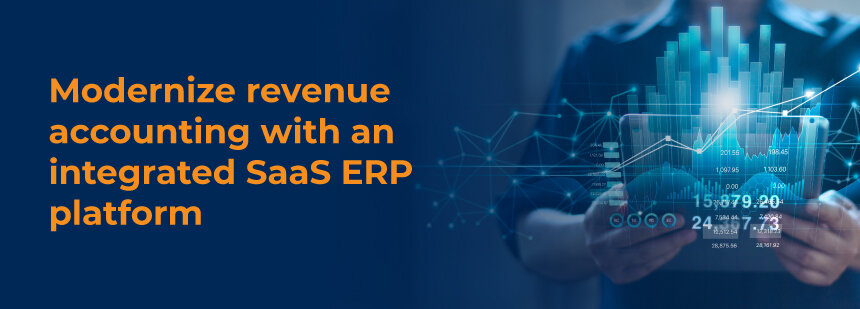Simplify Revenue Calculations and Distributions with a SaaS Platform

Revenue Accounting
Revenue accounting isn’t simple for any organization, but for oil and gas companies, it’s particularly complex. From the range of contracts with partners to in-field production data and maintenance costs to the fluctuations of the energy market to the intricacies of M&A, the number of variables that go into the process continues to grow.
What hasn’t changed about revenue accounting? The way that many companies go about it. Most oil and gas businesses still rely on a combination of on-premises point-product solutions plus Excel for revenue accounting (or even just Excel.) This system worked in the past when the numbers were relatively manageable. Specialized accountants knew how to work Excel magic, even if it took a while, and the organization valued the control that came with running its processes by hand and in house. These days, it’s a different story.

Challenges of Manual Revenue Accounting
In today’s landscape, it’s simply impossible to keep up with the pace and complexity of business using a manual approach to revenue accounting. Challenges include:
- Time. Running every calculation through Excel and then loading that data into another system is very time consuming. Transferring the data alone adds at least 10-15% more time to the process. These delays are particularly significant given the time pressure that accounting teams face. When hundreds or thousands of payments must be paid out by a contractual deadline, but your accountants are stuck manually crunching numbers, you’re only one error away from running behind.
- Accuracy. Accountants, of course, are human. They make mistakes, especially when faced with the volume and complexity inherent in modern revenue accounting practices. Avoiding errors takes time, and unraveling them takes even more. Between hard deadlines and compliance reporting, there are just too many opportunities for human error.
- Efficiency. Many manual revenue accounting processes aren’t limited to calculations. Teams frequently must spend time on tasks like reformatting statements from different partners to meet the standardized input layouts required by other systems. This work is not only tedious (and therefore a contributor to employee dissatisfaction) but inefficient. Without it, accounting teams could spend their time on higher stakes work that delivers much greater business value.
- Risk. Finally, the keys to the revenue accounting kingdom are typically held by just a few employees. This institutional knowledge works until those people leave or retire. Training someone new demands even more time, slowing down the process further and introducing additional risk for human error. As the size and scope of revenue data grow, so do the ramifications of losing your internal experts.
These challenges will come as no surprise to accounting and finance teams. As the folks in the trenches, they are well aware of how much time and energy it takes to complete the revenue accounting process each month, accurately and on time. What may come as a surprise, however, is that there is a different way to run revenue accounting that enables revenue accountants to do what they were hired to do: analyze, interpret, and gain insights from revenue data.

Transitioning from manual processes to an ERP is step one. The largest organizations rely on SAP or similar systems of record to run revenue accounting as part of the larger ERP ecosystem. It may not be the fastest or most flexible, but it gets the job done.
Benefits of SaaS ERP Platform for Revenue Calculation
Not all ERPs are created equal, however – especially for smaller to mid-size businesses. These companies must operate as efficiently as possible to maintain their margins, keeping overhead down and making smart investments that drive speed and agility. For them, a software-as-a-service (SaaS) solution is the perfect choice.
Integrated Solution
SaaS platforms like W Energy offer an integrated solution that connects revenue accounting to up- and downstream functions. As a cloud-native offering, each component is purpose-built to work together, not cobbled together in a loose network of point products. It’s worth noting that not all SaaS platforms are created equal, either. There’s a difference between a company that lifted-and-shifted its historical solutions to the cloud, and a business like W Energy that is built natively to operate in the cloud.
This seamless integration across the ERP makes it incredibly easy to get data in and out of the system. It’s simple to load the data as it comes in from various sources, and configurations allow users to control exactly how that data is processed and presented. That means no more time wasted by reformatting purchaser statements and the like. It’s also inherently secure, relying on AWS’s industry-leading cloud security protocols as well as independent SOC controls and certifications.
Run Processes Quickly and Accurately
With W Energy’s SaaS platform, processes run quickly and accurately. Teams don’t have to spend hours plugging, crunching, and transferring numbers. They can easily see what’s missing, go fix it, and rerun it for the month – all in minutes instead of hours or days. Our proprietary calculation trace functionality even shows how the platform ran each calculation. This visibility into variables and equations enables accountants to be true analysts, adding value to the business instead of pushing buttons and waiting for processes to run.
Works with Excel
The best part: our platform works with Excel, so teams don’t have to start from scratch. You can run all of the analyses in the system, then export to graph, chart, or pivot your data, ensuring that it’s sliced and diced exactly how you prefer in your tool of choice.
Real-Time Reporting
W Energy’s platform distinguishes itself from competitors through near real-time reporting capabilities, cloud-based infrastructure, and support for data lake and data warehouse initiatives. By harnessing W Energy’s platform, companies can leverage timely reporting, cloud-based infrastructure, and advanced analytics tools to make informed decisions, drive growth, and achieve long-term success in the oil and gas industry.
The oil and gas industry includes enough complexities. It’s time to simplify revenue accounting processes to give your team more time, greater accuracy and efficiency, cleaner data, tighter security, and less risk – all with a cloud-native SaaS ERP solution.

Author: Harrison Bedford, Product Marketing Manager
Harrison Bedford is the Product Marketing Manager for W Energy. He has over 10 years of experience working with customers, leading multiple implementation projects, working with internal and external stakeholders on building multiple modules of the W Energy platform and working with customers to ensure that the W Energy platform is tailored to their business needs. Harrison is very involved with the University of Tulsa, where he earned a degree in MIS and Accounting.
Connect with me on LinkedIn